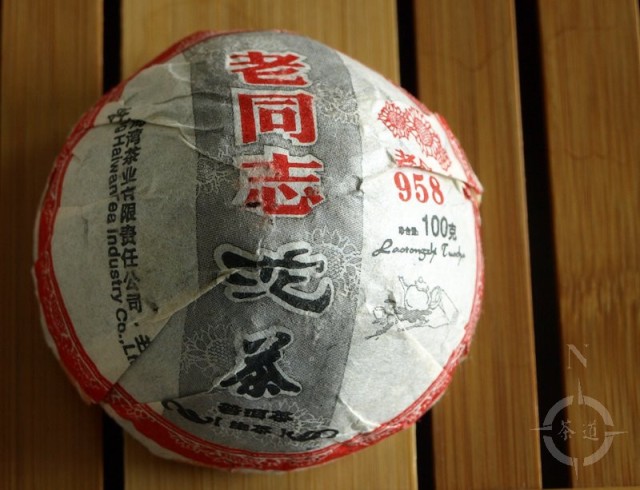
I first came across this tea when shopping at House of Tea‘s website.
It’s a 100g sheng/green/raw Pu-erh toucha (bowl/nest shape) from the Haiwan Tea Factory. I paid 149 Swedish Crowns, which as of today equals GB£13.71, €15.69, and US$16.71.
This is a 2008 pressing of Menghai material harvested in spring 2007.
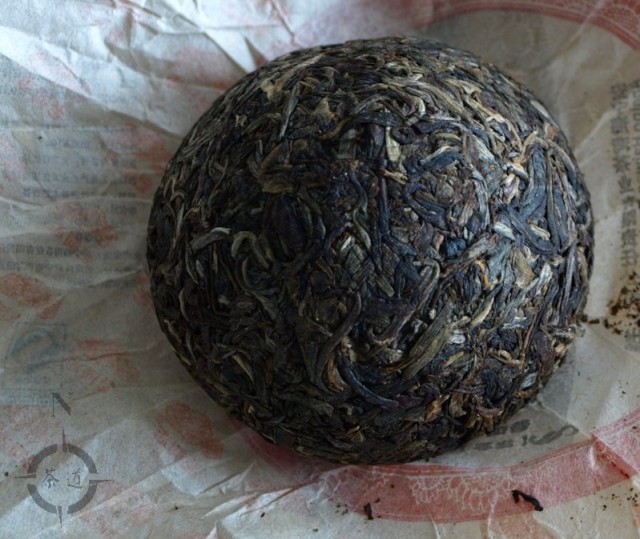
It’s a fairly tightly compressed tuo, and I had to really go to work with my pu-erh pick to liberate the required amount of leaves, always potentially tricky given the curved shape of a tuo.
The first time I steeped this tea I tried to eyeball the correct weight of leaf – bad move. I failed to take the tight compression into account, meaning I was steeping somewhat on the heavy side, resulting in a brew that was a bit too astringent for even my taste.
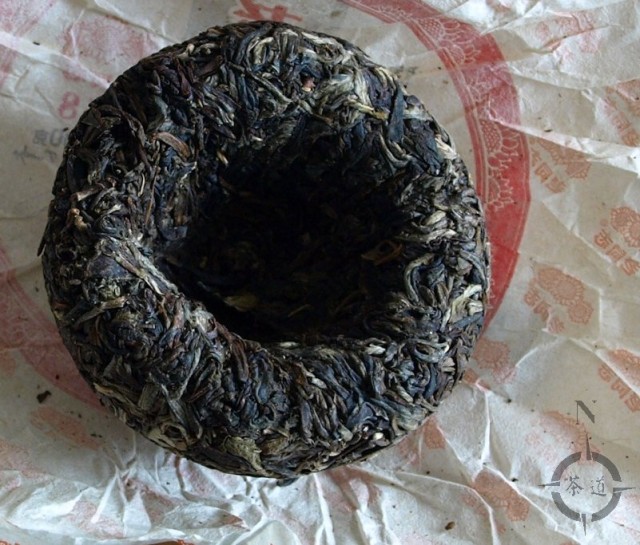
Having learned my lesson, for my next session I weighed out the dry leaf carefully, so as to get a feel for what the correct weight of tea should actually look like. Since then, all my sessions have been spot on taste-wise.
For my personal taste I’ve found that this tea works best if I steep it in what I like to call Great Uncle Style. In my 300 ml capacity lidded mug I use about 4 grams of leaf, and after a quick rinse with boiling water I start off with a 30 second infusion.
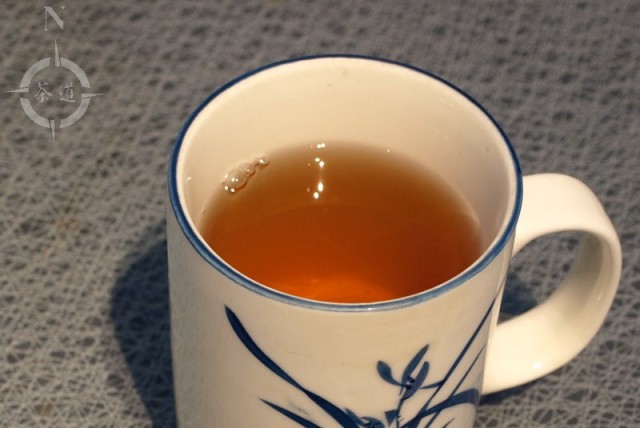
Subsequent steepings are at 40 then 50 seconds, then 1 minute and 1 minute 10 seconds. After that they go up to 1.5 minutes, adding 30 seconds every round up to 3 minutes. I then usually finish off with a 4 minute steeping, for a grand total of 10 steepings, at which point the tea has given all it has to give. Steeping this way I kick off my day sometime around 7 am, and the same batch of leaves will see me right through until the early afternoon.
A more orthodox gong-fu type session in a gaiwan or small clay pot with 6/7 grams to 150 ml or thereabouts should yield 15+ steepings without too much fuss.
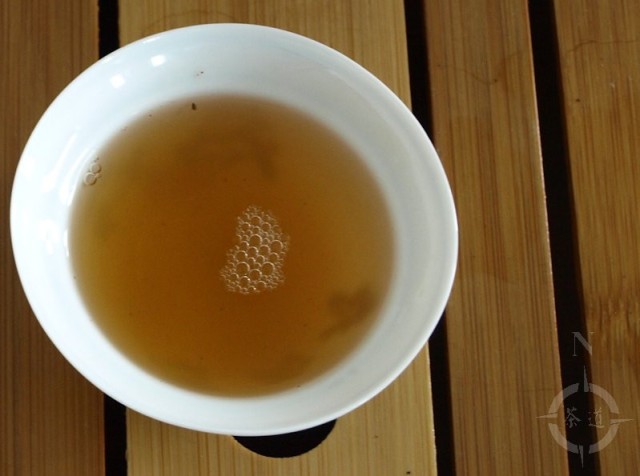
The tea has a kind of mild, laid back vibe to it. It has a fairly typical sheng flavour profile, with wood and dried mushrooms most prominent. There’s also a sweet, smoky aspect to it, that kind of reminds me of my dad burning hedge trimmings late on a summer evening. I’d describe the qi as sort of calm but focused, making it perfect for prolonged sipping during a working day.
There are two types of tea you regularly re-order – the “Hallelujah Bloody Hell Fire!” ones that are so good you’d sell a lung, kidney and an eyeball to secure a regular supply of them, and then there’s the solid, dependable daily drinkers.
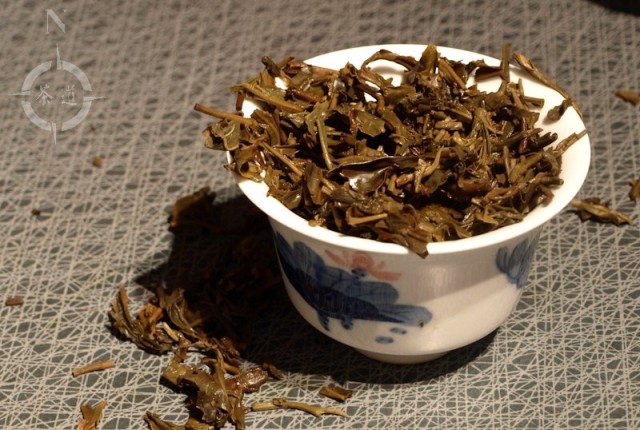
This tea falls into the latter category. You’ll never stand on a soap-box in the High Street on a Saturday afternoon shouting passionately into a megaphone about this tea’s charms, but on the other hand if you like a daily cup of sheng made with a minimum of fuss then you’ll always want some lurking in the back of the tea cupboard.

Hi, I do like your steeping names. I’m not sure that I could have got any tea from that ball to try, Chloe.
LikeLiked by 1 person
I have to confess to catching myself with my pick on more than one occasion, Chloe…! 🙂
LikeLiked by 1 person
It looks lovely. Always searching for new everyday teas. Thank you once again for sharing!☕
LikeLiked by 1 person
You’re welcome. 🙂
LikeLiked by 1 person
Pingback: Canton Raw Pu-erh | Diary of a Northern Teaist
Pingback: 2017 Haiwan Sweet Aroma | Diary of a Northern Teaist